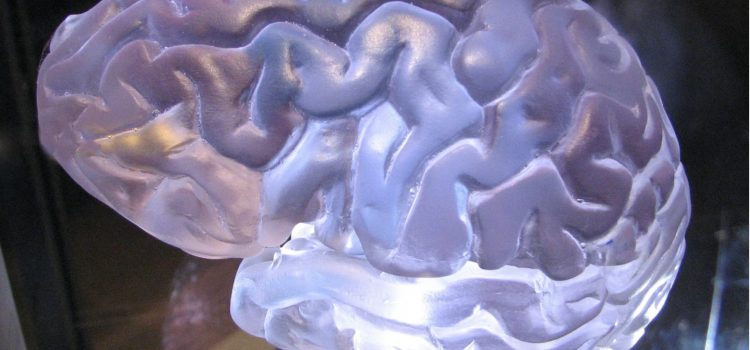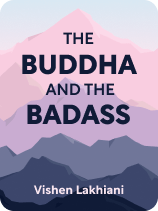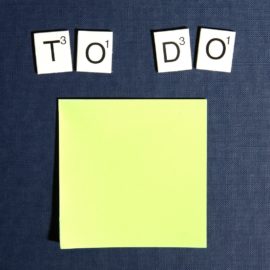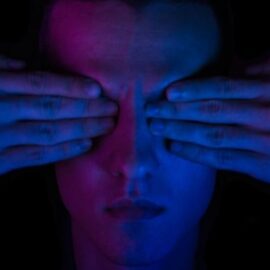

This article is an excerpt from the Shortform book guide to "The Buddha and the Badass" by Vishen Lakhiani. Shortform has the world's best summaries and analyses of books you should be reading.
Like this article? Sign up for a free trial here.
What is brain coupling? How does in-sync thinking foster collaboration in the workplace?
Brain coupling is where your team is in sync with each other when it comes to ideas or projects. Vishen Lakhiani’s book The Buddha and the Badass claims that brain coupling is important for efficiency and decision-making in an organization.
Discover how brain coupling works and why you should encourage it at work.
Foster In-Sync Thinking
Once you’ve hired people who believe in your goals and values, you should then foster an environment where they can easily experience what Lakhiani calls brain coupling: being totally mentally in sync on an idea or project. This improves the efficiency of your organization because people can make decisions faster, and it makes employees happier because they feel connected to and understood by co-workers.
As a leader, you can foster in-sync thinking by getting rid of hierarchical communication structures within the company. Let every employee approach any superior, no matter how senior they are. This allows ideas to travel freely between everyone.
(Shortform note: Lakhiani uses the term “brain coupling” to indicate a general sense of being on the same page as someone else. But it’s also a scientific phenomenon in which the brain activity of two people will align when they’re speaking with each other—such that if one person is describing an event she witnessed, the brain of the person listening will respond neurologically as if he witnessed it also. In other words, through speech, two peoples’ brain patterns sync up. This means speech is the main way people can brain couple, making Lakhiani’s recommendation to improve communication by removing hierarchies scientifically valid.)
Lakhianai also recommends encouraging in-sync thinking using the OODA model of decision-making, created by John Boyd, an airforce military strategist. This decision-making model emphasizes speed over accuracy and encourages team members to quickly make decisions without over-analyzing or fully weighing the pros and cons. Though this might allow for more bad decisions, the team will make more net good decisions (in its original use, OODA led air force pilots to fire more bullets overall. This meant a higher percentage of misses, but an even higher percentage of hits than when not using OODA).
In OODA, you don’t wait for perfect information, but quickly forge ahead with the information you do have to make a decision. Once you’ve made a decision, you restart the OODA process to determine if it led to a desirable outcome and change your approach if necessary. When an organization uses OODA, it gets more done faster, which allows the team to move forward in-sync as a whole.
OODA stands for:
- Observe (Identify a problem or opportunity. For example, if you own a fitness center, you might observe that your older clients don’t sign up for classes.)
- Orient (Consider what you know and how you might solve the problem. You might determine that hiring older fitness instructors could encourage older clients to attend classes.)
- Decide (Collectively agree on a solution. You’d bring this proposal to your team and quickly get their input and assent.)
- Act (Carry out the solution. You’d hire the older fitness instructors. Then, you’d start OODA over again: Observe if this approach worked and re-orient if necessary. For example, if this doesn’t bring in older clients, you’d scrap the idea. Or if older clients only sign up for yoga classes, you’d hire older fitness instructors to teach only yoga classes.)
| Alternative Approaches to Decision-Making OODA helps you make a decision quickly as a group and then pivot or adjust based on the decision’s outcome. But what if you have to make a decision that doesn’t allow you to pivot or adjust afterward? What if it’s more important to be accurate than to be fast? This could be the personal decision to have kids or a business decision to sell your company—once you’ve made these decisions, you can’t go back on them. For such big decisions, it might be better to follow Peter Drucker’s five-step decision-making process. Drucker’s approach is geared toward high-level executives, whose decisions have broad ramifications and generally need to be good rather than expedient. In general, he encourages such executives to make only a few critical decisions and to standardize the less significant choices (perhaps even using OODA). Additionally, he recommends making decisions slowly and deeply considering the requirements it must meet. Use conceptual and strategic thinking when reflecting on the problem, not practical problem-solving. That serves you in OODA-appropriate decisions but not in personally significant decisions. Let’s now look at Drucker’s approach and see how it differs from OODA: Step 1: Assess if the decision is common or special. If it’s a common decision, you can use a standard approach (again, this could be OODA). This isn’t a part of OODA because that process assumes the decision is standard. Step 2: Decide what the goal of the decision should be and what the constraints on it are. This is arguably similar to “Orient” in OODA—though orienting should likely take less time. Step 3: When considering what to do, always try to do the right thing, rather than simply make an agreeable compromise. Drucker asserts that you often will have to compromise, but if you start from the ideal outcome and make concessions from there, you’ll end up with a better decision than if you don’t even try to attain the best outcome. In OODA, there’s less emphasis on making the right decision and more emphasis on making a decision. You figure out if that decision was right after having made it. Step 4: To implement the decision, decide who you need to tell about it, who and what are the next steps, what powers the people implementing those steps must have, and how to measure your success. OODA doesn’t elaborate on this step to this degree, though conceivably, you should also think through these next considerations in the “Decide” phase. Step 5: Decide how you’ll collect feedback to know if your decision worked. This corresponds to starting OODA over again: Once you’ve made your decision, you “Observe” if it worked. |

———End of Preview———
Like what you just read? Read the rest of the world's best book summary and analysis of Vishen Lakhiani's "The Buddha and the Badass" at Shortform.
Here's what you'll find in our full The Buddha and the Badass summary:
- Why you don't need to work long, grueling hours to be successful
- How to transform your workplace from mundane to fun
- How to merge spiritual enlightenment with disruption






